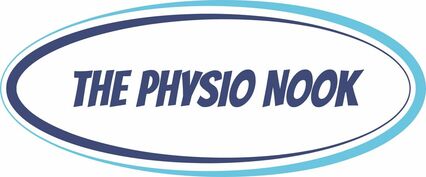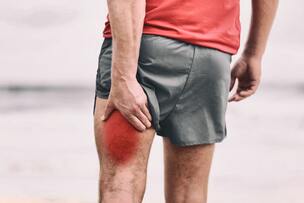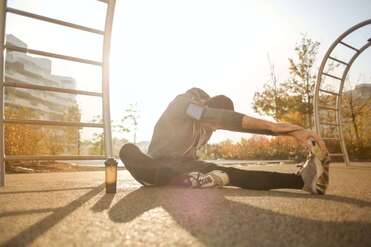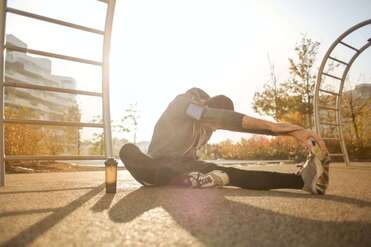|
Our muscles obviously play an important role in the movement of our body. Without them, we wouldn’t be able to bend our elbow or straighten our leg. As our muscles are soft and designed for flexibility, they are also prone to injury and if you have ever torn a muscle, you know that they can be very painful. In the period following a muscle tear, there are a few mistakes we often see people make that can make their injury worse and delay healing times. Here are a few of the most common mistakes we see... 1. Stretching
After a muscle tear, the damaged fibres slowly begin to heal and reattach to each other. This process can be quite fragile and during the early stages, aggressive stretching of recovering tissue can impair healing or even lead to more tearing. While gentle stretching a few days after the injury can have a positive effect, you should check with your physiotherapist to ensure you’re not stretching too far and causing further damage. 2. Applying H.A.R.M. Most of us are aware of the acronym R.I.C.E (rest, apply ice, compress the area and elevate) as the recommended treatment in the early stages of an acute injury. The acronym H.A.R.M is less well known and is used to remember the things you shouldn’t do after an injury. This stands for applying heat, drinking alcohol, running or massage. All of these activities can increase swelling, pain and increase the damage of the injury in the first 48-72 hours. 3. Failing to see a physiotherapist The diagnosis of a muscle tear might seem straightforward, however, there might be more going on than you realise. Many conditions can mimic a muscle tear, or you may have suffered a tear due to an underlying weakness or pathology. Having a physiotherapist confirm your muscle tear and identify any other issues is vital to ensuring you recover fully. Your physiotherapist is also able to identify any factors that could lead to further injury and is able to help restore your tissue to its previous level of strength and function. 4. Returning to sport too early One of the most confusing things about muscle tears is that they often become less painful while the tissues are still not completely healed. Many people suffer another tear simply because they return to sport too early. While you may feel as though your tissues are back to full strength, the muscle fibres can still be healing and vulnerable to further injury. It is important to test your injury gradually, starting with gentle exercise and building up to more high intensity activities. Your physiotherapist is able to guide you with a full rehabilitation program. This can help to restore strength, flexibility and control to your damaged muscle, keeping you injury free for the future.
0 Comments
We know that office life can wreak havoc on our body. Even with the best intentions, finding time to reverse the pressures of 8 hours a day sitting in a chair can be difficult. Here are three easy stretches to do daily that focus on common problem areas for office workers. Chest & shoulders stretch (wall angels):
Find a large flat wall and stand facing away from it. You may need to bend your knees slightly or step a few inches forward. Your pelvis, upper back and back of your head should all be in contact with the wall, with small gaps where the curves of your spine are. If you are unable to keep your head to the wall, you may need to use a towel behind your head to make this position comfortable. Tuck your chin in gently, keep your palms facing forward, elbows bent to ninety degrees with the backs of your arms against the wall. Now slide your arms up along the wall, as high as you can while keeping them in contact with the wall, pause for a few seconds and slide them down again. Repeat 5 to 10 times. This will stretch your chest and shoulder muscles which get tight from slouching at a desk, as well as help you to develop a sense of head position alignment with your body. Hip flexor stretch (lunge): Kneel on one knee, place your other foot on the floor in front of you and keep your knee bent to 90 degrees. Keeping your hips even, shift your pelvis forward but keep your shoulders back until you feel a stretch at the front of your hip of the kneeling leg. Hold for 30 to 45 seconds and then swap legs. Repeat 2 to 3 times. This will stretch your hip flexor muscles which are often tight from sitting for long periods. Seated hamstring stretch: Sit on the floor with one leg straight out in front of you. Bend your other leg and tuck your foot in towards your inner thigh. Reach forward with both hands and stretch towards your foot on the straightened leg, bending at your hips as much as possible. You should feel a stretch at the back of your thigh, if you feel a pull behind your knee you can point your toes or bend your knee slightly. Hold for 30 seconds and slowly come back up, change legs and repeat 2 to 3 times on each leg. Check with your physiotherapist if there are other stretches that may benefit you. What are they? The hamstrings are a large group of muscles located at the back of the thigh. Their job is to bend the knee, extend the hip backwards and stabilise the leg. The muscles can be injured at any point along their length but are most vulnerable where the tendon and muscle fibres join together. This is a common injury for players of all sports that involve running, and particularly those that involve quick movements and kicking. What are the causes?
As the hamstrings cross two large joints (the hip and the knee), they need to perform complicated movements, often activating suddenly and with great force. They are often stretched during a fall, a powerful kick of a ball or a sudden take-off. Factors that increase the chance of a tear include poor flexibility, strength or neural mobility. Other factors that contribute to hamstring injuries are muscle imbalances, abnormal lower limb biomechanics, fatigue, and inadequate warm-up. The biggest predictor of a future hamstring tear though, is a previous hamstring injury. What are the symptoms? The most common symptom of a strained or torn hamstring is a sharp pain at the back of the thigh, often immediately after intense activity. There may also be swelling, bruising, difficulty walking and pain with knee movements. Your physiotherapist can confirm that the pain is due to injured hamstrings rather than any other issues, and tell you how bad the strain or tear is. Although not usually required, diagnosis can be confirmed by having an MRI or ultrasound scan. How can physiotherapy help? Once a diagnosis has been made, the first step is to follow the R.I.C.E protocol (Rest, Ice, Compression, Elevation). During the first 48 hours, you should apply ice for 20 minutes every one to two hours to reduce swelling and bruising. Consultation with your physio will include advice about your recovery, and when it is appropriate to return to sport. Your physiotherapist has many techniques that can promote healing and reduce scar tissue formation, which may include ultrasound, deep tissue therapy, electrotherapy and dry needling. Crucially, they will also prescribe you an exercise program to return strength, flexibility and control to your muscles, getting you back to your sport quickly and safely. Due to the high chance of recurrence, rehabilitation is very important and usually takes 6-12 weeks. If the muscle is completely torn, surgery may be required before rehabilitation can start. Your physiotherapist will work with you to help you set goals to get you back to your favourite activities as soon as possible. |
Categories
All
|




